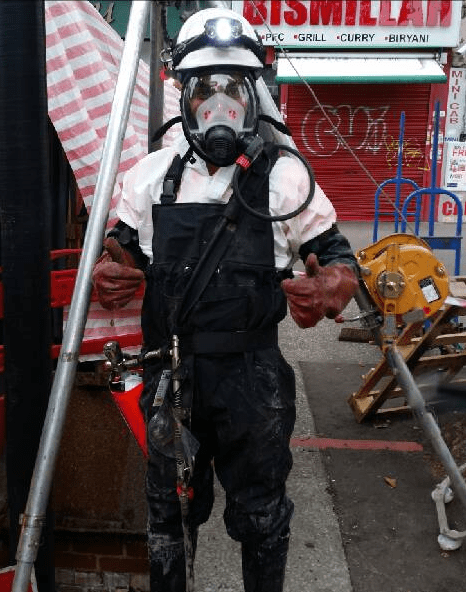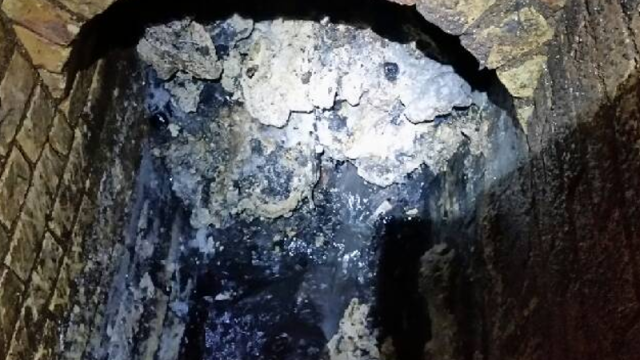Image: Thames Water
A so-called “fatberg” — a tightly congealed mass of fat, wet wipes, diapers, and condoms — is blocking a section of London’s Victorian-era sewage network. It could take weeks for utility crews to remove the horrific mass, which, if not removed, could cause raw sewage to spill onto London’s streets.
Such are the perils of maintaining an ageing sewage system. This awful mess formed in a Victorian-era tunnel in London’s Whitechapel district, and it’s ten times bigger than the one found in Kingston back in 2013, according to Thames Water, the London utility that now has to clean up this sorry mess. The disgusting blob, with an estimated weight of 143 tonnes (130 metric tons), is produced by the steady accumulation of things that shouldn’t be flushed down London’s toilets.
Our version of a walking tour of London: see for yourself the monster #Fatberg everyone’s talking about: pic.twitter.com/LNd81wAliO
— Thames Water (@thameswater) September 12, 2017
Matt Rimmer, head of Thames Water’s waste network, says the fatberg is nearly rock solid.
“This fatberg is up there with the biggest we’ve ever seen. It’s a total monster and taking a lot of manpower and machinery to remove as it’s set hard,” said Rimmer in a statement. “It’s basically like trying to break up concrete. It’s frustrating as these situations are totally avoidable and caused by fat, oil and grease being washed down sinks and wipes flushed down the loo.”
We’ve shown you what happens when fat & wipes go down the drain. We’ve asked you to bin it. But do you know how? Watch this space! #FatTrap pic.twitter.com/cLq7GkWYhN
— Thames Water (@thameswater) September 11, 2017
The mass is currently blocking a stretch of Victorian sewer that’s 820 feet (250 meters) long, longer than the length of two football fields, which, wow. The sewer itself is just 119cm high and about 71cm wide, making it particularly vulnerable to clogging.

Keep calm and carry on: A utilities worker suits up in preparation for some rather uncomfortable sewer work. (Image: Thames Water)
Work began last week to remove the mass — an unenviable endeavour that could take upwards of three weeks to complete. Crews consisting of eight workers are using high-powered jet hoses to break up the mass before sucking it out with tankers. On a typical day, these intrepid workers — covered from head to toe in protective equipment — are able to remove about 20 to 30 tons, which is then transported to a recycling site in Stratford.
Each month, Thames Water spends about £1 million (US$1,328,000) clearing such blockages in London and Thames Valley sewers. The utility has introduced a “Bin it — Don’t Block It” campaign to discourage its customers from flushing problematic items down the toilet. This information campaign is all fine and well, but what would really be effective is having the guilty London toilet flushers perform this wretched extraction work themselves. That would learn ’em.
[Thames Water via BBC]
